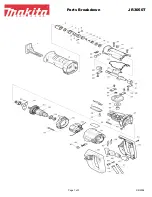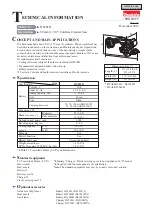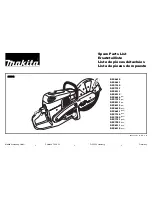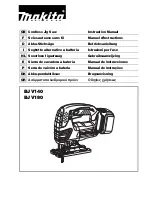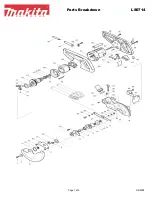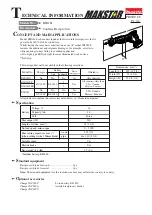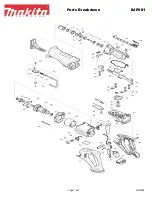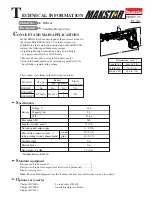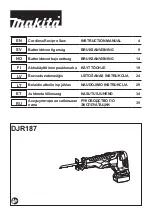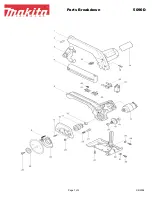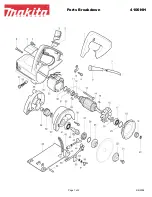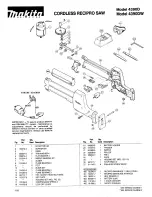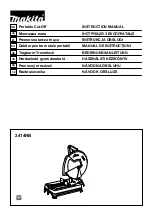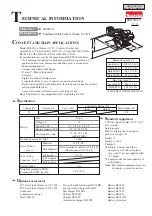
EN
37
Many accidents are caused by poorly
maintained power tools.
• Keep cutting tools sharp and clean. Properly
maintained cutting tools with sharp cutting
edges are less likely to jam and are easier to
control.
• Use the power tool, accessories and bits
etc., in accordance with these instructions,
taking into account the actual working
conditions and the work that is to be done.
It can be dangerous to use power tools for
purposes other than those for which they
are intended to be used.
• Keep handles and grips clean, dry and free
from oil and grease. Greasy handles and
grips make it difficult to hold the tool.
SERVICE
• The power tool must only be serviced by
qualified personnel using identical spare
parts. This will ensure that the power tool
remains safe to use.
SPECIAL SAFETY INSTRUCTIONS
FOR CROSSCUT/MITRE SAWS
• All the warning symbols on the power tool
must be clearly visible.
• Put nothing on top of the tool. If the tool
tips over or if you touch the saw blade this
can lead to serious injury.
• Check that the blade guard is working
properly and can move freely. Never
clamp the guard open.
• Never clear away pieces of wood or
sawdust from the saw while it is running.
Put the saw arm in its rest position and
switch off the tool with the power switch.
• Only apply the saw blade against the work
piece when the saw is running. Otherwise
there is a risk of kickback if the blade jams
in the workpiece.
• Keep the handles clean, dry and free from
oil and grease. Greasy or oily handles are
slippery and can cause you to lose control.
Keep your hair, clothing and gloves away
from moving parts. Loose-fitting clothing,
jewellery and long hair can get caught in
moving parts.
• If dust extraction and dust collection
equipment is available, this should be
connected and used correctly. The use of
such devices can reduce the risk of
dust-related problems.
• Do not allow the fact that you are used to
working with similar tools cause you to
become over-confident and to disregard
the safety instructions for the tool.
Remember that a fraction of a second of
inattention or negligence can result in
serious personal injury.
USING AND LOOKING AFTER
POWER TOOLS
• Do not force the power tool. Use the correct
power tool for the planned work. The tool
does the job better and safer when used at
the rate for which it was designed.
• Do not use the tool if it cannot be switched
on and off with the power switch. Power
tools that cannot be controlled with the
power switch are dangerous and must be
repaired.
• Pull out the plug and/or remove the battery
before making any adjustments, changing
accessories or putting the power tool away.
These safety precautions reduce the risk of
accidently starting the power tool.
• Store power tools out of the reach of
children when not in use. Never allow
children, or anyone who is unfamiliar with
the power tool and these instructions, to
use the tool. Power tools are dangerous if
used by inexperienced persons.
• Keep the power tool properly maintained.
Check that moving parts are properly
adjusted and do not jam, and that no parts
are incorrectly fitted or damaged. Check for
other factors that could affect functionality.
If the power tool is damaged, it must be
repaired before being used again.
Summary of Contents for 009461
Page 4: ......
Page 5: ......
Page 6: ......
Page 7: ......
Page 8: ...14 15 16 17 18 19 ...
Page 9: ...20 22 24 21 23 25 ...
Page 10: ...26 28 30 27 29 31 ...
Page 11: ...32 34 33 ...
Page 24: ...SE 19 ...


























